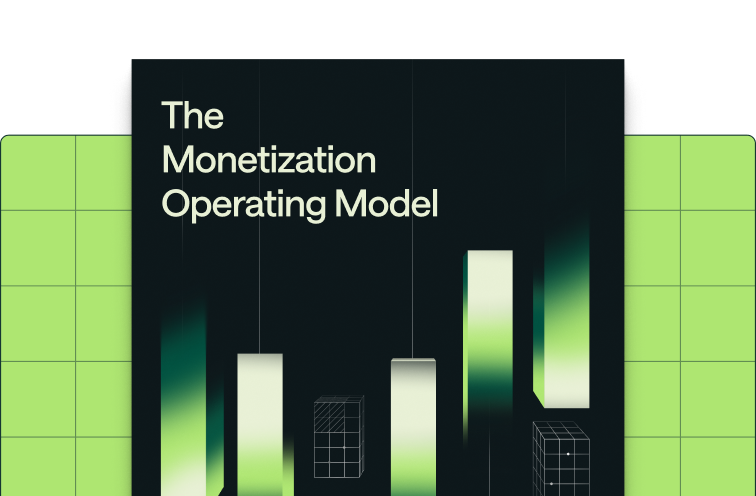Share
Growth exposes billing system failures exactly when you can't afford downtime. Imagine this scenario: Finance teams at usage-based companies spend three hours every month explaining to their board why "recurring" revenue dropped 30% when their biggest customer had a quiet month. Sound familiar? This painful conversation repeats every quarter in usage-heavy SaaS companies.
The root cause isn't sloppy forecasting; it's applying metrics designed for predictable subscriptions to unpredictable consumption. Annual Recurring Revenue still matters, but you need to split it into two distinct streams that reflect how revenue actually behaves
Baseline ARR captures contractually guaranteed minimums: money that hits your bank account even if customers idle their workloads. Variable ARR represents metered consumption you earn when customers process more data, run extra compute jobs, or consume additional API tokens. This separation gives boards the stability they expect while preserving visibility into growth you can influence.
This framework becomes critical as more SaaS companies layer usage charges onto traditional subscription fees. Yet, most finance teams still report a single ARR figure that blends predictable and volatile revenue into one number that looks precise but misleads everyone.
When you report Baseline ARR and Variable ARR separately, forecast accuracy improves, cash-flow planning stabilizes, and board meetings shift from damage control to strategic planning.
What ARR actually measures in usage-based models
When you present a single ARR number to your board, you're claiming every dollar behaves like a predictable subscription. That assumption breaks the moment your largest customer throttles back consumption and your "recurring" revenue drops 30%. The core problem isn't bad math; it's treating variable usage as if it were a fixed fee.
Traditional Annual Recurring Revenue is MRR multiplied by 12. The formula was built for products whose revenue truly recurs each month: seat-based CRM licenses that renew automatically.
When you bolt consumption revenue onto that framework, you're blending a variable with a constant.
Usage can spike or crash dramatically. AI platforms see workload-driven swings that would never appear in pure subscription models.
One month your largest customer migrates a data lake and doubles spend; the next month they idle the cluster for maintenance. Averaging those fluctuations into ARR smooths your chart but hides real volatility, precisely the kind of volatility your cash-flow planning has to absorb.
Boards still expect ARR to signal predictability, so this smoothing creates land mines. For example, finance teams celebrate crossing $10 million ARR, then are forced to acknowledge later that barely $6 million is contractually guaranteed. The remaining $4 million depends on consumption patterns outside your control, turning celebration into uncomfortable forecast revision.
This confusion grows as hybrid pricing spreads. Nearly half of SaaS companies now take a hybrid approach, combining subscriptions with metered components to capture both predictability and upside. Yet that same mix demands sharper definition of what "recurring" actually means.
Annual Recurring Revenue still matters: investors rely on it for valuation benchmarks, and finance teams use it to size renewal bases and expansion goals. The fix isn't abandoning the metric; it's respecting what it can and can't measure. Separate dollars that reach your bank account regardless of usage from those that fluctuate with customer activity.
Why traditional ARR calculation breaks finance operations
Usage-based pricing creates month-to-month revenue volatility that traditional ARR treats as stable, causing forecasting errors that compound quarterly. Traditional ARR uses trailing averages that don't account for usage volatility, resulting in inaccurate forecasting when consumption patterns change.
Finance teams that rely on traditional ARR shortcuts end up defending forecast misses, scrambling to explain why collections lag guidance, and freezing hiring plans funded on numbers the business never had.
Usage spikes create revenue unpredictability
Databricks, one of Metronome's customers, experiences textbook workload volatility. Customers routinely ramp cluster capacity during data migration projects or model-training sprints, then scale back once jobs complete. These "sharp, transient bursts" are common enough that time-series models must handle extreme seasonality and sudden regime changes, rather than simple straight-line extrapolation. When pricing breaks under these usage patterns, it creates cascading problems across both finance operations and customer experience.
If you lock December's migration spike into Annual Recurring Revenue, January's invoice will look like a revenue cliff even though nothing went wrong. For example, traditional ARR calculation might treat December's AI training spike as ongoing monthly revenue.
The same pattern appears in any consumption-heavy product. Consider these common scenarios:
- API platforms see traffic surge when a customer's new feature launches, then normalize once adoption stabilizes
- Data platforms experience quarter-end batch jobs, marketing-driven report generation, or fiscal-year audits that temporarily triple usage
- Modern usage-based models reflect seasonal patterns where customer workloads can vary significantly by industry and use case
Forecast accuracy unravels because averages hide the extremes. A single high-usage month can raise a customer's annualized run rate by 40 percent. When that expansion reverses, finance must explain why "recurring" revenue suddenly contracted without a churn event.
Measurement complexity destroys finance accuracy
Hybrid contracts introduce definitional chaos even when consumption steadies. Should prepaid compute credits count toward ARR the day they're invoiced or only as they burn down? If a customer commits to $120k per year but can consume it in any pattern, is the whole amount "recurring" or only the un-cancelable minimum?
Public companies answer these questions differently, which explains why two firms with identical economics can report wildly different ARR figures. Some teams annualize the prior month's subscription plus usage and label the result ARR, while others use a 90-day look-back they openly warn doesn't account for future fluctuations.
Revenue recognition rules deepen the complexity. The ASC 606 accounting standard lets you recognize committed revenue over time, but variable usage gets recognized as delivered. If your billing system can't tag each dollar as committed versus metered, you end up back-calculating ARR in spreadsheets, manually carving out one-time true-ups, and reclassifying credits when customers under-consume.
You feel the operational drag immediately across multiple areas:
- Finance closes get longer because ARR reconciliations don't match billing subledgers
- Board packages require footnotes to explain why ARR grew while GAAP revenue fell, or vice versa
- Benchmarking becomes guesswork because you can't compare your blended number with peers who disaggregate theirs
- Investor guidance loses credibility when they realize ARR is as much definition as dollars
The root cause is measurement, not math. Traditional Annual Recurring Revenue assumes revenue repeats like clockwork; hybrid pricing admits it doesn't.
The solution: baseline ARR vs variable ARR framework
When you blend subscription fees with pay-as-you-go charges, a single ARR number stops telling the truth. The fix splits ARR into two streams that behave differently:
Baseline ARR captures the revenue you will collect even if every customer decides to coast. Variable ARR reflects the consumption that can soar (or stall) depending on how customers use your product.
This disaggregation preserves the metric's power while restoring its predictive value. It mirrors how customers actually buy: enterprises negotiate minimum commits for budget certainty, then layer flexible usage on top so teams can scale experiments, migrations, or seasonal work.
Calculate baseline ARR for true revenue predictability
Baseline ARR is the contractually guaranteed piece of your book of business: revenue that hits your bank account whether customers launch a single workflow or not. Finance leaders ground cash-flow planning on this number because it carries the lowest variance.
The calculation is straightforward:
baseline_arr = (guaranteed_minimum_commits + fixed_subscription_fees) / contract_term_months * 12
The calculation focuses on contractually guaranteed revenue streams:
Baseline ARR includes:
- Platform or seat subscriptions that renew automatically
- Minimum spend commits in hybrid pricing plans
- Annual license and support fees that customers are obligated to pay
Baseline ARR excludes:
- Consumption above the commit
- True-ups customers can forfeit
- One-time services or implementation fees
Treat Baseline ARR as the financial floor. Build retention and renewal models on it, layer in modest churn assumptions, and you have a solid base for operating budgets, debt covenants, and hiring plans. The moment you mix overage dollars into this bucket, every downstream forecast inherits usage volatility.
Model variable ARR from consumption patterns
Variable ARR is still recurring, it comes from the same customers, but its cadence is governed by how much work they run through your platform. Ignoring it leaves growth upside off the table; treating it like a subscription inflates expectations.
A practical starting point:
variable_arr = trailing_six_month_usage_average * 12
A six-month window smooths one-off spikes yet reacts faster than an annual look-back. Our analysis shows that 6-month trailing averages provide optimal balance of accuracy and responsiveness for usage-based forecasting. If your product shows pronounced seasonality (retail analytics that peaks in November, for example), overlay seasonal indices and confidence bands so board decks present a range, not a point estimate.
Usage cohorts behave differently. Enterprise migrations can triple consumption in quarter one, stabilize in quarter two, then decline as efficiencies kick in. Track momentum indicators that reveal consumption patterns:
- Percentage of workloads above commit
- Number of active projects
- Growth in seat-enabled features that correlate with higher usage
Remember that Variable ARR changes faster than Baseline ARR, so update forecasts monthly, not quarterly. Show the sensitivity: "If consumption falls 15%, Variable ARR declines $2M; Baseline ARR remains $18M." This contrast clarifies risk and prevents the three-hour meeting where you explain why "recurring" revenue dipped after a customer paused a large AI training run.
Implement modern ARR measurement in finance operations
Finance teams can't fix forecasting by changing formulas alone. Baseline and Variable ARR only become trustworthy when every dollar flowing through contracts, meters, and invoices gets tagged correctly the moment it happens.
This requires systematic changes across data pipelines, contract structure, and stakeholder communication.
Build infrastructure that separates revenue streams
Start by designing billing infrastructure that tells the truth in real time. Separate tables for "committed" and "metered" revenue let you surface Baseline ARR as a clean ledger of guaranteed cash while streaming usage events feed a live Variable ARR meter.
With data foundations in place, operationalize the split through systematic contract taxonomy. Build processes that automatically classify revenue streams:
- Build a classification system that labels each SKU as "baseline-eligible" (fixed platform fees, minimum commits) or "variable" (overages, pay-as-you-go)
- Store those flags directly in billing tables so finance never has to re-classify revenue manually
- Stream metered events into the warehouse daily, rate them against the active price book, and post both recognized revenue and Variable ARR snapshots
- Implement back-fill logic for late-arriving events to keep historical ARR accurate
These systematic processes eliminate manual reconciliation work that consumes hours during every financial close.
Create operational alignment across teams
You need to make sure that everyone is working towards the same outcome in order to make sure your modeling is honest.
Sales teams need training to anchor proposals around minimum commitments. When commitments sit in their own column on the order form, finance can book Baseline ARR the day contracts are signed instead of reverse-engineering it later.
Customer success teams need leading indicators like commit utilization, daily active workloads, or token consumption growth to predict Variable ARR swings before they hit the P&L through finance dashboards that track usage momentum trends.
Finance teams should run sensitivity analyses that flex Variable ARR by plus or minus two standard deviations of recent usage. This gives you realistic ranges for cash planning rather than single-line fantasy forecasts.
Once you've got alignment, you'll want transparency and visibility.
Surface clear reporting to stakeholders
The next step is to create a board dashboard with transparent reporting across key metrics:
- Top-line Total ARR with trend
- Baseline ARR with trend
- Variable ARR with confidence intervals derived from usage volatility
- Sensitivity analysis showing impact of consumption changes
This eliminates the "why did ARR drop?" conversations that burn hours at quarter close. Publish an ARR policy document that defines inclusions, exclusions, and look-back windows, then lock it behind version control.
Publish an ARR policy document that defines inclusions, exclusions, and look-back windows, then lock it behind version control. Share monthly variance reports that reconcile Total ARR to GAAP revenue so auditors and investors see the bridge from forward-looking metrics to recognized revenue.
Leverage modern tooling for accuracy
Modern billing infrastructure makes this separation manageable. Companies like Confluent have demonstrated how replacing rigid billing systems can eliminate weeks of manual updates for pricing changes while streamlining downstream reporting. The key capabilities that enable this framework include:
- Tag every invoice line as committed or metered when generated
- Handle real-time usage ingestion and rating at scale
- Support both subscription and consumption pricing models simultaneously
- Integrate seamlessly with data warehouses and financial reporting systems
The upside is material: cleaner data reduces manual adjustments, scenario ranges keep hiring aligned with reality, and transparent dashboards elevate conversations from "what happened?" to "what decision will we make?"
Transform ARR from confusion to clarity
ARR remains essential, but it requires evolution for usage-based reality. Splitting your recurring revenue into Baseline ARR (contractually guaranteed) and Variable ARR (consumption-driven) provides everyone with accurate information: what's predictable and what fluctuates with customer behavior.
Boards get clean stories. Baseline ARR anchors decisions on headcount, cash runway, and debt capacity. Variable ARR highlights where product adoption, seasonality, and new workloads drive expansion.
Finance teams gain accuracy. Mapping guaranteed fees and minimum commits into Baseline while annualizing recent metered usage as Variable means forecasts align with reality rather than optimistic projections.
Investors see both stability and optionality. They can value the predictable foundation today while understanding the growth potential built into usage expansion.
This framework succeeds when your billing infrastructure can tag every invoice line as committed or metered when generated. Achieve this capability, and you'll shift from explaining surprises to steering growth with confidence.
Accurate metrics represent more than improved reporting; they enable modern finance teams to drive strategic value alongside product and other teams.
{{widget-monetization-whitepaper}}






.png)
.png)


